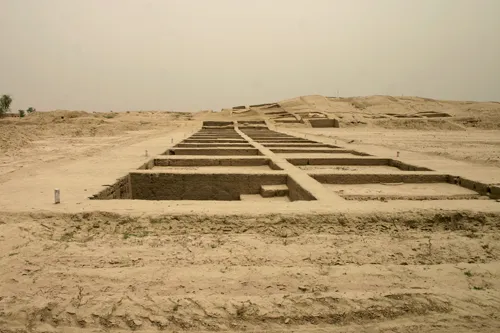The Archaeological Significance of Baror: Unveiling the Layers of the Indus Valley Civilization
Baror, an archaeological site in the Sri Ganganagar district of Rajasthan, India, stands as a testament to the rich cultural tapestry of the ancient Indus Valley Civilization. This site, located near the India-Pakistan border in the Thar Desert, has yielded significant findings that contribute to our understanding of one of the world’s oldest civilizations.
Get your dose of History via Email
Location and Discovery
Situated approximately 13 km northeast of Anupgarh and about 100 km southwest of Kalibangan, Baror is strategically located on the right bank of the now-dry Sarasvati River (modern Ghaggar). The site was first discovered by Luigi Pio Tessitori, an Italian Indologist, in 1916-17. Subsequent surveys and excavations, particularly those led by Amlānand Ghosh post-India’s independence and under the Sarasvati Heritage Project in the early 2000s, have further highlighted its archaeological importance.
Excavations and Findings
The excavations at Baror have revealed a three-fold cultural sequence, spanning from the Pre-Harappan to the Mature Harappan periods. The site’s mound, measuring approximately 200 × 150 meters and rising to a height of 11 meters, has provided invaluable insights into the settlement patterns, architectural styles, and daily life of its ancient inhabitants.
Period I – Pre-Harappan
The earliest phase at Baror is characterized by red to dull red ceramics made on the wheel, devoid of any painting. These artifacts, along with storage jars, miniature pots, and a few grey sherds, suggest a community engaged in basic pottery and living in structures possibly made of wattle and daub or thatched roofs.
Period II – Harappan
This period marks a significant advancement in pottery, with the introduction of bio-chrome pottery featuring black paintings on a red to dull red surface. The designs include horizontal bands, loops, wavy lines, and various motifs, indicating a flourishing artistic culture. The main shapes found include vases, basins, bowls, and dishes-on-stand.
Period III – Mature Harappan
The Mature Harappan phase at Baror reveals a well-planned city with an industry-based economy. The pottery of this period, characterized by red ware and red slipped ware, showcases a culmination of technique and artistic skill. The discovery of mud brick house complexes, oriented in cardinal directions along roads, indicates a highly organized urban layout. Additionally, the exposure of a fortification wall in the north-western part of the mound points to the strategic importance and defensive measures of the settlement.
Other Discoveries
Among the notable findings at Baror are terracotta items, jewelry, and ornaments, including a skeleton adorned with ornaments and a pitcher filled with 8000 pearls. These discoveries, along with stones producing red-colored dust and a large clay oven, provide a glimpse into the daily life, craftsmanship, and cultural practices of the people of Baror.
Conclusion
The archaeological site of Baror offers a unique window into the Indus Valley Civilization, shedding light on its cultural, technological, and urban developments. The findings from Baror not only enrich our understanding of this ancient civilization but also underscore the importance of preserving and studying our shared human heritage. As excavations continue, it is hoped that further insights will be uncovered, continuing to add depth to our knowledge of the past.
Sources:
Wikipedia
Archaeological Survey of India

